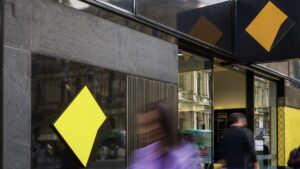Long-short funds – why you don’t necessarily have to lose money in a bear market

Picture Getty
- A decline in the stock market doesn’t mean you necessarily have to lose money
- Retail investors are not allowed to open a short-selling broker account in Australia
- But there is a handful of long-short and short-only funds available on the ASX
The year 2022 has been the worst year for the US stock market in more than a decade.
The benchmark S&P 500 index is down 16% so far this year, while tech-heavy Nasdaq has suffered a 30% drop.
In Australia, the S&P/ASX 200 hasn’t done as badly, down only by 5% as the rise in commodity exports shielded the local market.
Nevertheless, the risk of a global recession in 2023 is rising as the world deals with the dual headwinds of high inflation and central bank rate hikes.
A falling stock market however doesn’t mean that investors have to necessarily lose money.
Investing in a long-short fund allows investors to benefit from both rises and falls in share prices.
Unlike a long-only fund which relies on equities increasing in value, fundies managing a long-short fund buy stocks that are expected to rise (long), and sell ones they expect to fall (short).
In other words, whether markets are going up, down or moving sideways, the return profile on these funds won’t be directly impacted.
Quest’s portfolio manager Richard Dixon explains that he typically chooses companies to short by identifying those with structural problems.
“Short position candidates would typically rate poorly on our measure of quality or value,” Dixon said.
“They would also be companies affected by such things as structural decline, an increase in competition, poor management, and weak financials.”
The Quest fund holds 30% of its fund in short positions and Dixon says this 130/30 strategy is very suited to the local market.
“The Australian market is 2 or 3x more concentrated than other global benchmarks,” Dixon explained.
“So the ability for a long-only manager to benefit from a meaningful underweight is very minimal.
“There is only 11 stocks in the ASX 200 that are greater than 2% where a long-only manager can get a meaningful underweight view, so by adding on the short extension and broadening the opportunity set, it just creates more opportunity to get additional alpha return.”
For a typical ASX investor like you and me, corporate regulator ASIC doesn’t allow short-selling on our individual broker account.
Only those investors deemed sophisticated or professional can open a short-selling account.
In general, the practice of short-selling in Australia is strictly regulated, and since 2010 ASIC has required all stockbrokers to report their total short sale positions daily.
The only way for retail investors to get exposure to short positions on the ASX is to invest in one of the listed funds.
The L1 Capital fund
The L1 Capital fund or L1 Long Short Fund (ASX:LSF) is one fund that provides this type of exposure.
As of September end, the LSF fund has 55 long positions and 27 short positions.
It’s well understood that most fundies don’t want to talk about their short positions.
Short-selling is risky and fundies are reluctant to disclose these positions so as not to draw attention to any trades that don’t go in their favour.
On the long side, LSF invests in stocks such as Mineral Resources (ASX:MIN), Sandfire Resources (ASX:SFR), Qantas (ASX:QAN), and Ramsay Healthcare (ASX:RHC).
Overseas, the fund also invests in global names like Alibaba Group and Cenovus Energy.
L1 Capital is also bullish on copper and believes there is a disconnect between the physical copper market and the equity market.
The fundie says copper demand is expected to sustainably and structurally increase, as the copper-intensive global energy transition gains momentum.
“Meanwhile copper supply is very difficult to increase, due to lengthy mine development timeframe and limited incentive to commit growth capital at current prices,” L1 Capital said.
“Our global copper forecasts suggest we are heading for a major and sustained copper supply shortfall in the medium term.”
L1 Long Short Fund share price today:
Regal Investment Fund
The Regal Investment Fund (ASX:RF1) is another long-short fund listed on the ASX.
Regal was founded in 2004 and has specialised in alternative investment strategies with a primary focus on long-short investment strategies.
As of October, the fund is bullish on the mining sector (37 long stocks vs 22 short stocks), and relatively bearish on Discretionary (11 long stocks vs 14 short stocks).
The fund also has long net positions on the Healthcare, Financials, and Tech sectors.
Its long exposure include coal producer Stanmore Resources (ASX:SMR), graphite producer Syrah Resources (ASX:SYR), electronic property settlement provider PEXA (ASX:PXA), as well as eye-focused biotech Opthea (ASX:OPT) and Victorian-based gold producer Red 5 (ASX:RED).
Regal Investment fund share price today:
Short-only ETFs
For investors wanting to go all in on short-only funds, a number of ASX-listed ETFs are also available.
Betashares currently offer three of what it calls “bear funds” on the ASX.
These funds provide a short exposure to the relevant sharemarkets.
Note that ETFs that provide daily returns which are 100% inversely correlated to a specified benchmark are not currently permitted in Australia.
Betashares Australian Equities Bear Hedge Fund (ASX: BEAR)
BEAR seeks to generate returns that are negatively correlated to the returns of the Australian sharemarket.
A 1% fall in the Australian sharemarket on a given day can generally be expected to deliver a 0.9% to 1.1% increase in the value of the fund.
Over time, the fund’s returns will not necessarily be within in the range -110% to -90% of the fund’s Net Asset Value over periods longer than a day.
This is due to the effects of rebalancing the fund’s investment exposure from time to time to maintain the daily target of short exposure, as well as the effects of compounding.
Australian Equities Strong Bear Hedge Fund (ASX: BBOZ)
BBOZ seeks to generate amplified or leveraged returns that are negatively correlated to the returns of the Australian sharemarket.
A 1% fall in the Australian sharemarket on a given day can generally be expected to deliver a 2% to 2.75% increase in the value of the fund (and vice versa).
The fund obtains its leveraged short exposure by selling equity index futures contracts (i.e. ASX SPI 200 futures).
The benefits of investing in BBOZ is that investors can avoid the costs and complications of futures, CFDs and short-selling, along with the need to deal with margin calls.
U.S. Equities Strong Bear Hedge Fund – Currency Hedged (ASX: BBUS)
This fund is also a leveraged fund, but geared towards a short exposure in the US market.
A 1% fall in the US S&P 500 Total Return Index on a given day can generally be expected to deliver a 2% to 2.75% increase in the value of the fund (and vice versa).
BBUS is an example of an ‘inverse ETF’, which is currently prohibited on Australian shares but very popular in the US.
It invests in cash and cash equivalents and sells equity index futures contracts (i.e. S&P 500 futures) to obtain the magnified (or geared) exposure.
Betashares short fund ETF prices today:
Stockhead has not provided, endorsed or otherwise assumed responsibility for any financial product advice contained in this article.The views, information, or opinions expressed in the interviews in this article are solely those of the interviewees and do not represent the views of Stockhead. Stockhead does not provide, endorse or otherwise assume responsibility for any financial product advice contained in this article.
Related Topics
UNLOCK INSIGHTS
Discover the untold stories of emerging ASX stocks.
Daily news and expert analysis, it's free to subscribe.
By proceeding, you confirm you understand that we handle personal information in accordance with our Privacy Policy.








